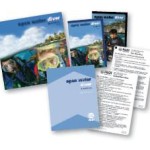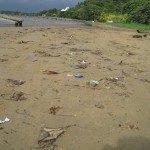
It’s that time, the annual DEMA Show. DEMA is the Diving Equipment and Marketing Association, and this show is the dive show for professionals. So, what’s gone on so far? The show started today, but programs were afoot yesterday. PADI Course Director Update yesterday morning. We heard more about the revised Open Water Diver course, which looks really cool. One important thing is that there is no hard/set implementation date for the new course materials. So, instructors & shops, use up your own stock. In the meantime, order the new materials and go through them. Yes, read the book, watch the DVD, go through the lesson guides, practice the skills, etc. We all have homework to do.

Then, living the pro diving lifestyle, we had the PADI Member Social. It was an excellent session, with a few highlights of what we do and lots of networking with each other (yes, the wine, beer and sodas flowed freely).
This morning, I walked part of the show and then attended the DAN 2014 Instructor forum/update. Diving First Aid for Professional Divers (DFAPro) will be released soon. This is the last of the DAN programs to be revised. It’s been a long road, but the revised courses and materials for all DAN programs have been well worth it. Kudos to the DAN staff for making these changes. After a bit more on the show floor, I had a meeting with people at DAN about how to improve diver safety. That was followed by a meeting with James Morgan from PADI to talk about goals and ways to make instructor development better. James also took some time and showed me the new Open Water Touch, the interactive tablet version of the Open Water Diver student materials. It looks pretty cool and I can’t wait to get my copy.
